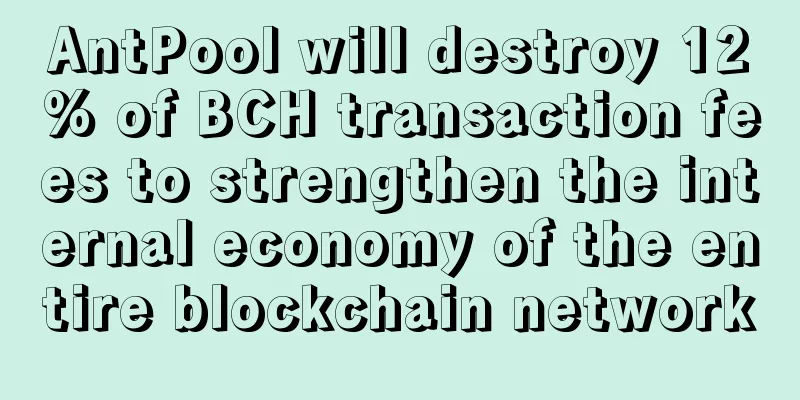Zhejiang Zhongnan Construction invested $4 million in the US blockchain big data startup Peernova and will establish a joint venture in China to develop the Chinese blockchain market

|
While some startups are still obsessed with the blockchain hype, others are making a name for themselves by swimming upstream in a low-key way. PeerNova, a San Jose startup, is one of the latter. The company was previously a bitcoin mining company, and now it is committed to using blockchain to solve enterprise big data problems. However, this may change soon. Peernova is currently in the process of raising $4 million in Pre-B round of financing, which may help the company become a big player in the blockchain field in 2017. The $4 million in funding comes from China’s Zhejiang Zhongnan Construction Holdings Co., Ltd. This brings Peernova’s total funding raised to $13.6 million, including funding raised in late 2014 and early 2015 for its enterprise blockchain services transformation. Zhongnan Construction will hold a 5% stake in Peernova. However, even with the new funding, Peernova CEO Naveed Sherwani and CTO Gangesh Ganesan said the company would not choose to be more public about their work, and choosing to use blockchain would make it a typical 'blockchain company.' Sherwani told CoinDesk:
Sherwani said this research-first approach meant that while most of their peers were focused on maximizing partnerships in certain subject areas, such as clearing and settlement, they saw themselves as prioritizing less-discussed areas of workflow and reporting inefficiencies. He said Peernova is using blockchain to solve specific use cases where traditional database queries would be too time-intensive using more traditional technologies. Peernova now has a product called Cuneiform, which seeks to help consumers verify changes to subsets of larger data stores without requiring participating institutions to process more unnecessary data.
A blockchain without a ledgerWhat makes Peernova unique compared to its peers is that the blockchain they are using does not itself use a distributed ledger. This is because unlike other projects of the same kind, Peernova is not trying to establish trust between some trusted or untrusted institutions. Instead, it is trying to provide a reference point for enterprises, while using cryptography to replace the role of traditional auditors. Sherwani said:
Sherwani claims that Peernova's product can provide automated reports with '100% mathematical correctness' or 'no misrepresentations'. In partnership with State Street Corp., for example, Peernova is working to help hedge funds determine the tax liability of their investments, using a blockchain system to track and provide a history of the funds’ investment and reinvestment activity. He said:
Where is the entry point to the Peernova blockchain?While Ganesan admitted that many in the industry use the term blockchain ‘very loosely’, Sherwani is adamant that Peernova is implementing the technology in a very strict sense. Sherwani explained that Peernova uses a blockchain to provide cryptographic proof of events, which can be queried based on an agreement that the data being referenced is reliable. For example, if you want to know whether a certain employee has executed a certain transaction on a certain day, Sherwani said a relational database can be used to store the history of transactions, and then a team of auditors can be hired to create connections between these events. He said Peernova’s technology allows these connections to be created in real time in a blockchain database, which can then learn these activities more easily and dynamically. He said:
No proof of conceptPeernova isn't limited to proof of concepts. While startups like R3 and open-source communities like Hyperledger have brought together financial institutions for testing and experimentation, Peernova has established special partnerships with companies that want to work with it to create what Ganesan calls a ‘final product’. He said:
This requirement means that Peernova has taken longer to confirm customers. Compared to many companies, Peernova set a modest goal for 2016, undertaking three projects that met their standards. Heading EastIn the East of the world, Peernova does have something in common with its peers, with China emerging as its 2017 development destination. According to Coindesk, the open source Hyperledger platform is also preparing to expand to China, and most of R3’s recently added members are from China. Sherwani said Peernova plans to close its Series B round in the first quarter of 2017, and plans to launch a joint venture with Zhejiang Zhongnan Construction in 2017. Like Circle and Ripple, Peernova hopes to use strategic partnerships to gain a foothold in Asia in this way. However, Sherwani concluded that you probably won’t hear about these moves in upcoming press releases, saying Peernova is still looking to prove that its technology is worth paying attention to. Sherawni concluded:
|
>>: Blockchain ownership startup Bitmark raises $1.7 million in seed funding
Recommend
Your facial features can tell you which job you are suitable for
People often say that if someone is good-looking ...
See your life fortune from your feet
A tree that can be embraced by two people grows f...
Illustration of the face of a man who is good at killing his husband
The physiognomy book says that the husband and wi...
The influence of forehead on fortune (Part 1)
The origin of Han physiognomy can be traced back ...
How to resolve the problem of messy palm lines
In palmistry, if there are many chaotic lines on ...
What do we see from the "Web3 New Economy and Tokenization White Paper"?
Hong Kong Web3 Festival At the global cryptocurre...
European regulators are targeting Binance
Cryptocurrency exchange Binance reportedly launch...
Palmistry marriage line, see a person's marital status
The marriage line is the horizontal line that app...
There are many villains in the workplace. Pay attention to these facial features
It is not easy to deal with villains in the workp...
What does it mean if there are lip beads on the lips? What kind of fate does it have?
In physiognomy , different shapes of facial featu...
The Evolution of Bitcoin
This article is compiled from Jiang Zhuoer's ...
Bitcoin legalization in El Salvador is no accident, Bitcoin Beach and Lightning Network are the key
Last week, the Congress of the Republic of El Sal...
Do women with shaggy eyebrows have good personalities and what is their fate like?
As one of the traditional physiognomy techniques, ...
Men with narrow foreheads, personality and fortune of people with narrow foreheads
If a man has a low and narrow forehead, or has ma...
Mole diagram of women_ Mole analysis
Everyone has moles, and these moles usually refle...









